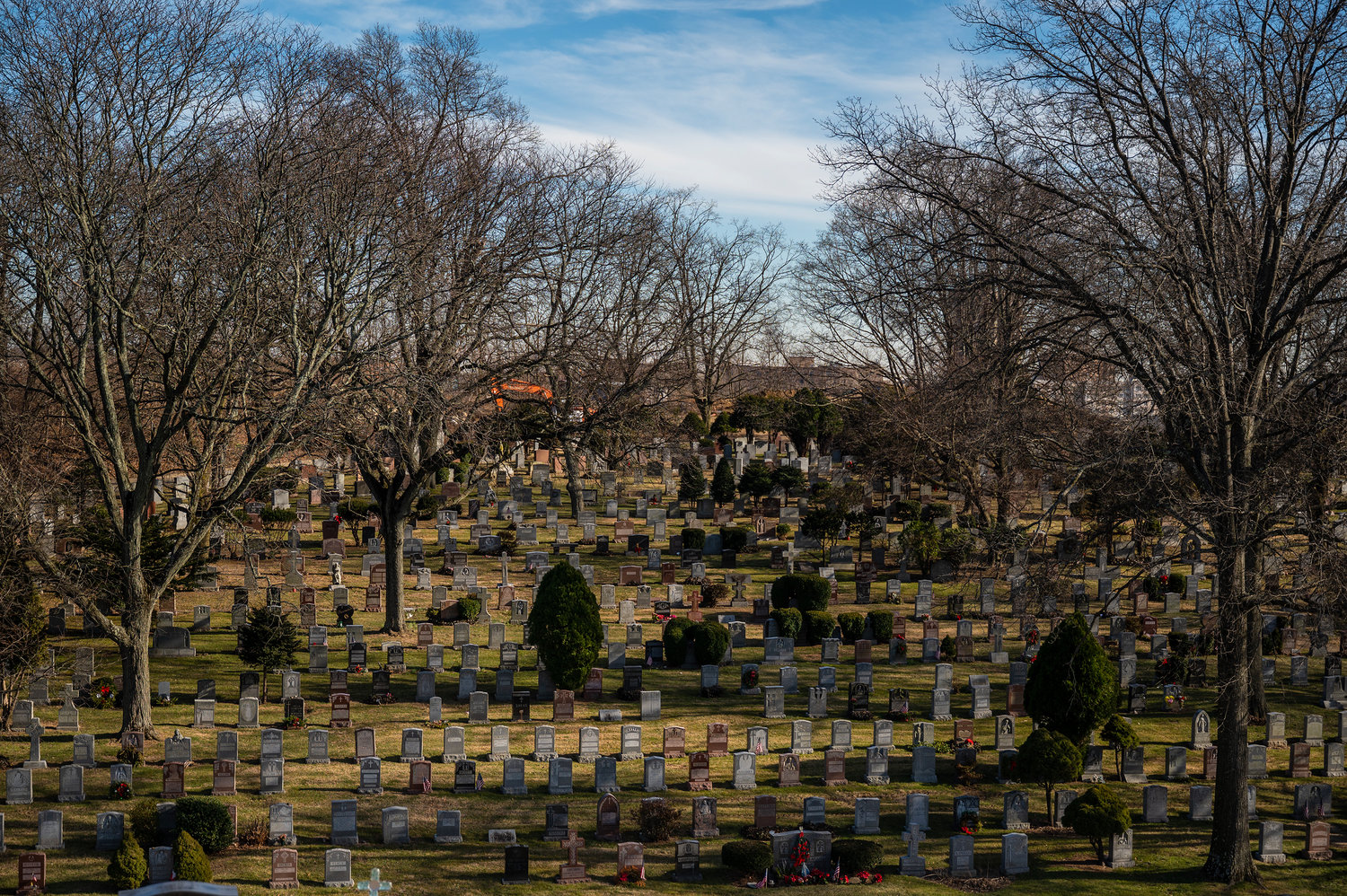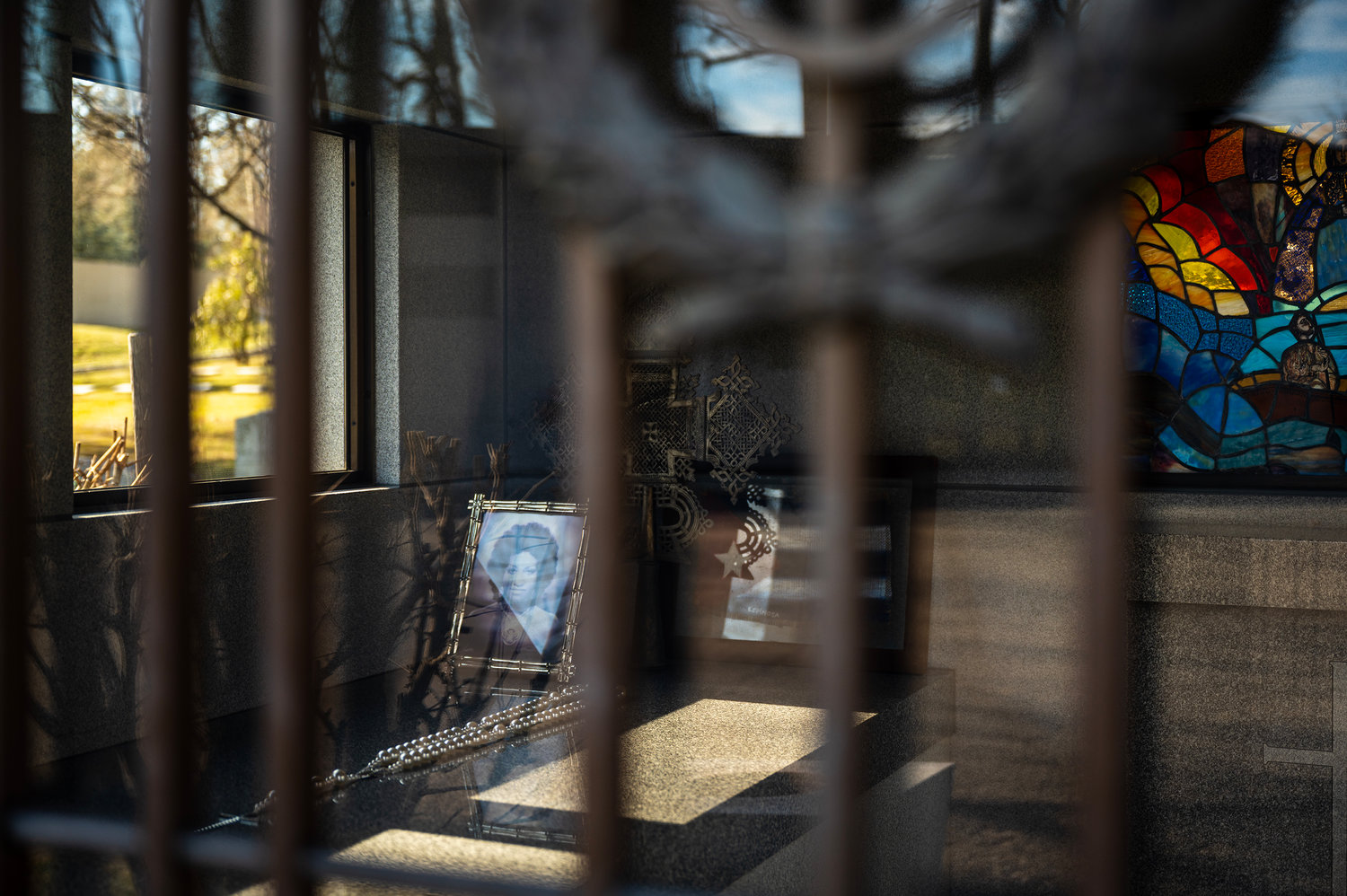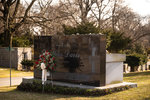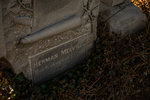The final resting place of all resting places
Woodlawn Cemetery boasts celebrities from all walks of life, while also a cog in community
As you ride in the trolley bus along the winding roads in Woodlawn Cemetery, you can’t help but wonder how this was once was just a small, rural place to bury your loved ones.
That is how it started out in 1863 during the Civil War, according to Woodlawn historian Susan Olsen. “The Board of Trustees set out to build a ‘Rural Cemetery,’ a park like setting that would rival the established garden cemeteries of the east coast,” the foreword in the 2014 book “Sylvan Cemetery: Archictecture, Art & Landscape at Woodlawn” stated.
“It’s become more of a communal greenspace,” Olsen said during the tour. “A place to take a walk. A place to take your third-grade class to make their leaf collection in the fall. If they want to see a turtle or wood duck, they come here.”
In addition to the appeal to the community — seasonal events such as concerts are held on the grounds — Woodlawn is known for being the who’s who of final resting places from all type of celebrities, famous or infamous.
“One of the things that distinguishes Woodlawn from any place else regarding celebrities, we’ve held up pretty well,” Olsen said. “If you go to our rival Greenwood in Brooklyn, they have Boss Tweed. How many people know who Boss Tweed is. We’ve got Miles Davis.
I always say if you have to tell somebody they are famous, then they are not famous.”
While the cemetery attracts the families of the 320,000 people buried there or whose cremains are stored in a special pond and garden, it is the celebrities who continue to attract those from all over the world.
There are those fans who like to visit the sites of “Moby Dick” author Herman Melville, jazz greats Miles Davis and Duke Ellington, Cuban singer Celia Cruz, journalist Nellie Bly and Indian fighter Bat Masterson.
All the jazz
Music and culture play a big part in Woodlawn’s history and role in the surrounding community. For instance, there is a whole section devoted to jazz greats. It starts off with a monument dedicated to George Wein, the founder of the Newport Jazz Festival. It is carved in limestone, unlike the granite used for the rest of the mausolea and headstones.
The festive monument includes a saxophone player leading a quintet playing to an audience. It leads guests to a nearby fork in the road that includes the sarcophagus of Miles Davis with a shiny black granite headstone, which is right across from Duke Ellington and his family.
“For Miles Davis, his third wife, Cecily Tyson, said he never wanted to be in the ground,” Olsen said. “They were going to build a mausoleum. But they chose a sarcophagus, where he is buried with one of his trumpets.”
Ellington was one of only two pre-planners at Woodlawn, she said. The other was Victor Goines, the renowned composer and saxophonist.
“Duke buys his lot in 1959,” she continued. “He moves his parents to New York city. His sister is there. His cousins are there. He was buried on Memorial Day in 1974. The only other pre-planner is Victor Goines.”
Goines has been commissioned by the Woodlawn Conservancy to write and perform The Woodlawn Suite, a series of musical biographies that celebrates the lives of those buried at Woodlawn. It debuted last year.
“Victor Goines & Friends concerts have been among the most popular programs at Woodlawn,” Meg Ventrudo, executive director of the conservancy said last May.
While such events keep these celebrities’ memories alive, the cemetery also attracts fans of historical figures they have seen on TV or in the movies.
“In recent months and this past year, all these people are interested in is this ‘Gilded Age’ TV show,” Olsen said. “Well, the people the show is based on are buried here. The star of the show is Mrs. Russell. And she is modeled after Alva Belmont, whose gravesite is right there.”
The allure of the people from the Gilded Age around the turn of the 20th century was that rich people wanted to show how cultured they were, Olsen said. “They wanted to show they travelled the world,” she said. “Now, if you wanted to see a little bit of Egypt but can’t afford to go, you can come here.”
Some more history
The idea of embalming the dead became popular in 1865 after President Abraham Lincoln was assassinated and his body was taken across the country in a train so Americans could pay their last respects. In order to do that, someone had to preserve his body.
“He was embalmed,” Olsen said. “People like to look at perfection. So, all of sudden undertakers became funeral directors and people wanted their loved ones to look like perfection. And people wanted to know about this embalming thing.”
What draws visitors
About a year after its first internment, that of Phoebe E. Underhill, the cemetery took advantage of the proximity to Harlem Railroad’ station to allow families to hold funeral parties where they could deliver the remains of the departed to the cemetery’s entrance, according to Edward Streeter’s “The Story of the Woodlawn Cemetery.”
Woodlawn was one of the first cemeteries in a large city that aggressively advertised its services to residents. Its motto was, “We’re only 30 minutes from Grand Central.”
Even the history of how Woodlawn gained its National Historical Landmark status shows just how special Bronx residents felt about their cemetery.
“In order to become a landmark, you need letters of support,” Olsen said. “So, we asked E.L. Doctorow for one. He wrote a letter why he thought Herman Melville’s gravesite should be a national landmark. The only thing he asked is that he be buried as close to Herman Melville as possible. So, when he passed, we found a nice little spot for his cremains.”
As for Melville’s headstone, it’s among those visited quite regularly. Fans place manuscripts, old copies of “Moby Dick,” whale toys, quarters, and pens on it.
“What I love most about it is the monument,” Olsen said. “It’s rough cut stone representing a unfinished life. There’s a feathered quill underneath. It’s the grave of a writer. The ivy is a symbol of immortality.”
The cemetery is even known for some creators of famous phrases. The person who penned, “It’s not whether you win or lose. It’s how you play the game,” is buried there. That is sportswriter Grantland Rice. Then there is Admiral David Glasgow Farragut, the Civil War hero, who was known for saying, “Damn the torpedoes, full speed ahead.”
His story is tied to the beginning of the cemetery’s celebrity status as he was the highest ranking officer buried there.
His gravesite is marked by a tall monument, one of the many that dot the landscape throughout the country. In 1870, 10,000 people marched in his procession.
“Once Farragut was buried here, everyone knew this was the place to be buried,” Olsen said.
With the famous comes the infamous. And Woodlawn Cemetery has that also. It is a very expensive and large mausoleum devoted to the former “skunk of Wall Street” Jay Gould.
“The mausoleum is 30,000 square feet,” Olsen said. “It is the largest mausoleum in the cemetery. It has a weeping beach in front.”
There is no name on the mausoleum, which looks more like a Greek or Roman monument than a burial place for a financier. “There is no name because he didn’t want people to know he was there,” she said. “His fraud affected many people.”















